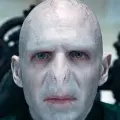Demon Slayer the Movie: Mugen Train (2020) put an end to the nearly two-decade reign of Spirited Away (2001) as the highest-grossing film in Japan, and it's safe to say that the word mania is an apt description for the Demon Slayer franchise.
The highly anticipated third season, Demon Slayer: Kimetsu No Yaiba - To the Swordsmith Village (2023), has finally premiered, and the excitement it has generated among fans is akin to the fervor for a two-episode season premiere. Its popularity extends far beyond Japan, matching the fervent reception it receives domestically.
Over the past few years, we have witnessed the meteoric rise of Demon Slayer. The manga series has been an extraordinary success, with over 150 million copies sold. Demon Slayer the Movie: Mugen Train (2020) became Japan's first film to surpass one billion yen in a single day, igniting the box office and prompting the reopening of cinemas amidst the pandemic.

From manga and anime to movies, literature, games, stage plays, and the promotion across platforms like Netflix, Amazon, as well as the buzz on social media, roadshows, exhibitions, merchandise, and collaborations, Demon Slayer has constructed an "Infinity Castle" of positive significance. Its popularity has transcended its initial target audience of young boys and now encompasses an ever-growing number of adult women and older demographics. The phrase "Total Concentration Breathing" from the series even found its way into public discourse, used by the Prime Minister on a public occasion. With such soaring popularity, the creator, Koyoharu Gotouge, a member of the post-1990s generation, has achieved financial freedom with an annual income exceeding 28 million USD. It is worth noting that Demon Slayer is an adaptation of Gotouge's 44-page short manga, Kagarigari, which she created at the age of 23. This work earned her the prestigious "One-Shot" award from Shueisha's Weekly Shonen Jump. The cover of this manga features a mysterious male protagonist with his face obscured by crows. Perhaps paying homage to this quirky detail, in a recent episode of Demon Slayer, when the main character, Kamado Tanjiro, undresses and jumps into a hot spring, a crow provides him with some modesty.

Of course, the success of Demon Slayer can be attributed to several favorable factors coming together at the right time and place. Aside from its existing popularity and the momentum of its marketing campaigns, the combination of film and television series has shortened the waiting time for new episodes, and during the release of the feature film, Hollywood blockbusters and local hits had taken a step back due to the pandemic. Audiences were hungry for movies, especially animated ones, and theaters needed a box office savior.
However, the core question remains: is Demon Slayer as a whole good enough, not just relying on the success of a single film like Mugen Train (2020)?
This question arises because it inevitably faces criticism, especially during its initial exposure to a broader audience.

As a Shonen manga series, Demon Slayer follows a specific formula to create explosive, action-packed characters with a sufficient number of visually appealing personalities. It frequently presents scenes of battles, humor, heartfelt moments, and even the stereotypical passion of a young hero. Being a part of Shueisha's "Weekly Shonen Jump," which holds the secret to capturing massive audiences, Demon Slayer must adhere to the golden rule of "friendship + effort + victory."

This inevitably leads to a predictable pattern: a naive protagonist with hidden potential embarks on a journey of defeating monsters and leveling up, leading the audience to unlock the map of story settings, form alliances, encounter enemies, and ultimately achieve their initial goal while undergoing personal growth in high-stakes situations.
Works like Dragon Ball, One Piece, Naruto, and Jujutsu Kaisen have all followed this relatively straightforward entry pattern. It's not that it doesn't work; it's just not groundbreaking. However, during the early stages of building a narrative that can easily become tiresome for the audience, Demon Slayer's handling of character development, particularly in terms of likability, can sometimes lean too heavily into catering to the target demographic of young boys.
As for the Hashira, the representatives of the righteous side, their collective appearance initially showcased a demeanor that could easily be perceived as aloof, arrogant, childish, or even obnoxious, which can create discomfort or a sense of distance. Their portrayal lacked the depth or allure found in the various Demon characters.

The protagonist, Kamado Tanjiro, occasionally suffers from being excessively idealized, overshadowing those moments that should be either exciting or emotionally touching. The concept of "gentle" or excessive gentleness that gradually takes on negative connotations in 2D culture often becomes a focal point for attacking Kamado Tanjiro.
Due to its dual nature of being both passionate and tragic while also being noisy and juvenile, Demon Slayer can struggle to find a cohesive balance in its art style and pacing. This can lead to a fragmentation of the story, as seen in the first episode of Demon Slayer: Kimetsu No Yaiba - To the Swordsmith Village (2023). The initial part featuring the intense and frenzied meeting of the Upper Rank demons contrasts sharply with the later portion focusing on Kamado Tanjiro's awakening, which feels more chaotic and drawn-out.
It is only when Kamado Tanjiro embarks on his journey to the Swordsmith Village to train and enhance his abilities, engaging in swift battles against Gyokko (Upper Rank 5) and Hantengu (Upper Rank 4), that Demon Slayer can regain its grip on the captivating and suspenseful battlefield that has always been its strong suit.

Let's circle back to the protagonist, Kamado Tanjiro. Undeniably, especially in the early stages, he exhibits several aspects of an overly perfect character, which, to some extent, aligns with the didactic role such characters play in shonen stories. However, this perfectionism tends to make the character somewhat dull, even injecting a certain otherworldly soul into him.
The unique compassion that distinguishes Demon Slayer primarily emanates from Kamado Tanjiro. While suffering is inherent to all beings, when faced with evil, people are often reluctant to delve into the root causes of suffering. They prefer not to lose their outlet for venting frustration or plunge into the abyss of imagination. Many crime films nowadays aim to explore the backgrounds and psyches of criminals, and in doing so, they examine the distance between us and evil, attempting to find the potential for liberation from suffering through an understanding of its origins.
Before each demon perishes, they experience a series of memories resembling a revolving lantern, representing the last vestiges of their humanity. Within these recollections, we witness the flaws of family, societal pathology, the distortion of love devouring human nature, and demons' revenge as a product of societal corruption, serving as a critique of the world and human hearts.

What sets Kamado Tanjiro apart is not just his strong sense of empathy, but also his understanding that demons themselves are victims of their demonic nature. Like him, apart from slaying demons, he also seeks forgiveness. He forgives humans for the flawed nature they eventually reveal, demonstrating a compassionate and reverential approach to demon slaying with undertones of remembrance and mercy, reminiscent of Buddhist principles of salvation.
This character's exceptional purity and inclusiveness inadvertently place him in a realm beyond his age. By giving him a touch of innocent silliness, he becomes even more captivating. Moreover, Tanjiro's uniqueness lies in the fact that he does not aspire to be the greatest in the world or achieve grand ambitions. Even though he ambitiously claims to defeat the ultimate enemy, Muzan Kibutsuji, he seeks revenge to restore his sister's humanity, eliminate the threat of demons to the world, and ultimately displays humility and tranquility throughout his journey.
In the realm of passionate storytelling, this character possesses both lofty ambitions and a lack of ambition, reflecting the current mindset, especially among the younger generation, of forsaking grandiose pursuits and instead focusing on living their own lives within their own small worlds.
One of the key factors that allowed Demon Slayer to break out of the realm of Shonen manga and appeal to a wider audience is the harmonious contradiction embodied by Kamado Tanjiro. This gentle characteristic, rarely found in a protagonist like Tanjiro, adds a unique touch that surfaced after female author Koyoharu Gotouge entered this predominantly male-dominated creative domain.

When Ufotable took on the task of animating the manga, the visuals reached an aesthetic level of excellence. From the boundless imagination displayed in high-speed combat scenes to the intricate landscapes shifting between mountains, snow-covered fields, towns, and villages, every detail, including costumes, accessories, and weapons, is not only exquisitely crafted but also masterfully reflects the aesthetic of the Taisho period (1912-1926), bridging the gap between tradition and modernity.
The visual feast corresponds to the enchanting and diverse texture of Demon Slayer, complemented by the story's powerful expansiveness. Each scene seamlessly integrates supernatural elements, enabling the creation of distinct characters and setting the stage for extraordinary events and thrilling situations.
Therefore, Koyoharu Gotouge decided to conclude the manga in 2020, after its serialization began in 2016. The main characters, still relatively inexperienced, quickly encounter formidable adversaries, vividly establishing themselves as expendable pawns amidst brutal battles. The story progresses relentlessly, eliminating the potential fatigue that often plagues long anime narratives, leaving audiences captivated by its tragic grandeur.

After the relatively subdued second half of the first episode of Demon Slayer: Kimetsu No Yaiba - To the Swordsmith Village (2023), Kamado Tanjiro will soon join forces with two Hashira and engage in a climactic battle against two Upper Rank Demons. Keep in mind that after the third season, the final showdown will take place at the Infinity Castle, culminating in a decisive duel with the ultimate antagonist, Muzan. Surprisingly, the third season, in comparison to the rest of the story, may be considered relatively tame, given the sheer excitement of other story arcs.
Now, as Demon Slayer Season 3 approaches its conclusion, do you like Demon Slayer? Follow me and leave a comment, telling me when you became a fan of Demon Slayer. I will continue to release articles on Demon Slayer in the future.
The 9th ATA Winner, the Fascinating Cultural Code Behind ‘Demon Slayer’ (1/2)
The 9th ATA Winner, the Fascinating Cultural Code Behind ‘Demon Slayer’ (2/2)





















































¡Comparte lo que piensas!
Sé la primera persona en comenzar una conversación.